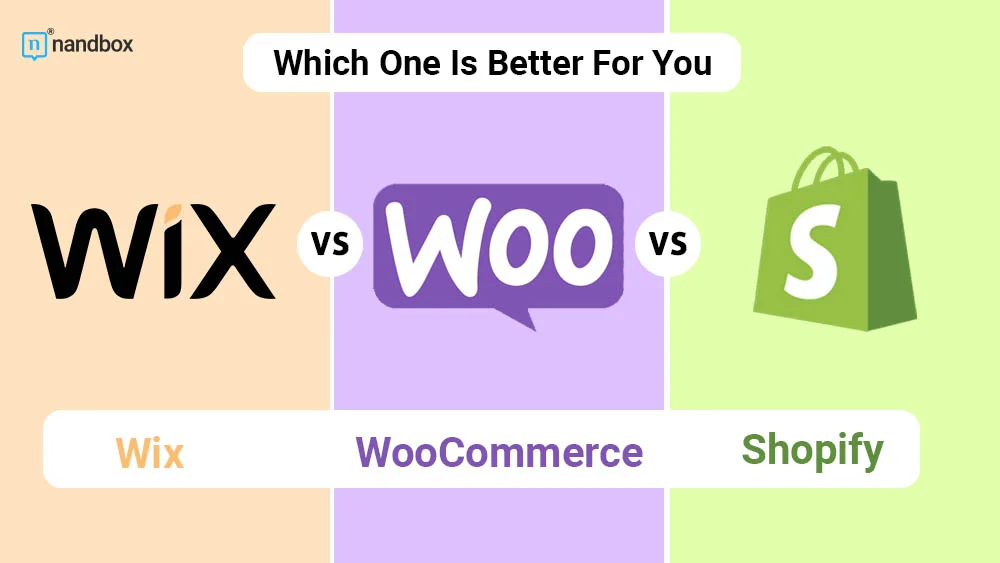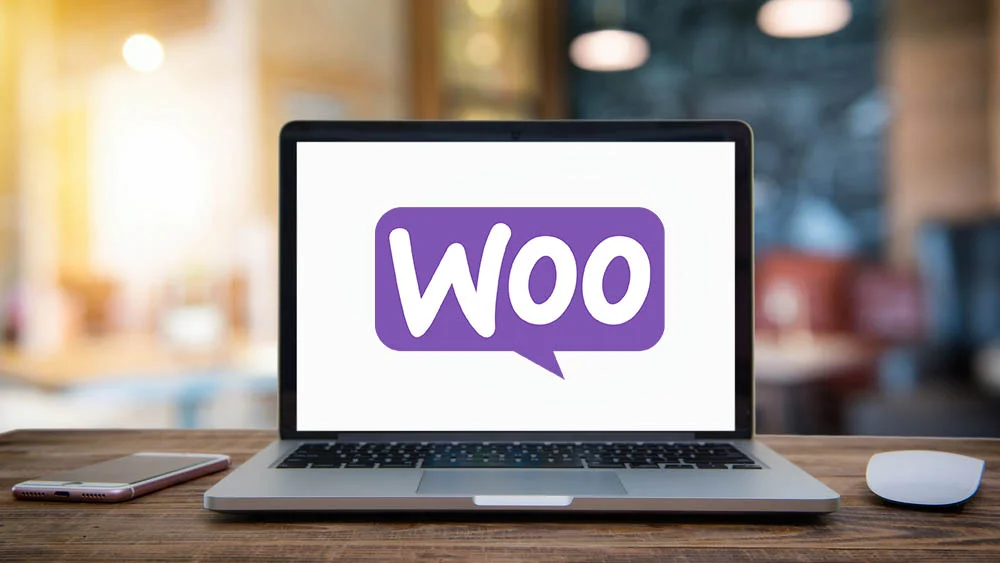Setting up an online shop has become necessary for businesses to keep up with the modern world. Luckily, they have plenty of options to start operating on the World Wide Web. Shopify, WordPress’s WooCommerce, and Wix E-Commerce are popular and satisfactory options for many small businesses. But which one is better for you if you want to start a new e-commerce venture or take your existing shop online? This article compares WooCommerce vs. Shopify vs. Wix to help you tell which is a better fit.
What is WooCommerce?
WooCommerce is a free and adaptable e-commerce plugin developed specifically for WordPress sites. It is widely used in the creation of virtual stores.
WooCommerce also makes it simple for users to control their online shops. Everything, from creating product pages and handling customer orders to integrating with various payment gateways, is possible.
The WooCommerce plugin is readily available for download from the WordPress plugin directory.
WooCommerce has a simple user interface, ideal for newcomers. You don’t have to be a computer scientist or expert programmer to get started. That’s why a lot of companies opt to use it.
According to Barn2, 3.8 million online stores are currently using WooCommerce, anywhere from a department store to a bed and breakfast to a charity.
WooThemes, the company that created this platform, released it for the first time in 2011. Then, in 2015, Automattic, the company behind WordPress, bought them out.
The integration of WordPress and WooCommerce was a game-changer for both companies. To this day, Automattic has remained a committed contributor to WooCommerce and its add-ons.
What is Shopify?
Shopify is an e-commerce platform that allows businesses of all sizes to set up an online storefront and sell their products with a single, unified control panel.
To sell on social media, seller marketplaces, other blogs and websites, and via email, text, and chat, set up a Shopify store and get started on the same day. Partnering with a Shopify theme development company can significantly enhance the aesthetic and functionality of your online storefront, providing a seamless and engaging shopping experience for your customers.
Shopify’s integrated POS makes selling in person at retail stores, pop-up shops, farmers’ markets, and other venues a breeze.
Shopify is effective because it allows you to manage your inventory, customers, and administrative duties from a single interface linked to your various sales channels.
After getting the basics down, Shopify makes it simple to branch out into untapped markets and sell via unconventional mediums.
What is Wix?

Wix eCommerce, a new version of Wix for online stores, brands, and merchants of all sizes, was released on June 30, 2020. Specifically, Wix has made a significant step with this release toward joining the growing eCommerce market trend.
Because of this, Wix eCommerce introduces a plethora of cutting-edge capabilities, such as advanced business and financial management tools, streamlined customer shopping and payment processes, and much more.
WooCommerce VS. Shopify VS. Wix
1. Use
As a business owner, your time is valuable. You need to devote the bulk of it to things like responding to customer comments and questions, fulfilling orders, and communicating with suppliers. You’ll need a user- and maintenance-friendly e-commerce platform to achieve that goal seamlessly,
WooCommerce
When you install WooCommerce, your WordPress dashboard will expand to include new sections for managing things like inventory, orders, discounts, and more. Easily add new products or alter the look with just a few clicks from the dashboard.
But keep in mind that WooCommerce, being a plugin for WordPress, can be more complicated and will necessitate some familiarity with WordPress for optimal use. Since both WordPress and the WooCommerce plugin need to be installed and configured initially, more work is involved. You would need basic programming knowledge to get started with WooCommerce.
Shopify
Shopify’s user interface is so straightforward that even inexperienced users can easily set up a store.
We want to be clear that Shopify’s backend is still quite powerful, so don’t expect to have your site live in five minutes. We are impressed by how well-designed and intuitive its editor is.
Users have nothing to stress over in terms of technicalities. With just a few mouse clicks, they can accomplish almost anything. Shopify has excellent documentation and guides for new users. You can even set up and publish a shop within a week.
Wix
Like Shopify, Wix caters to users who lack technical expertise. So, it goes without saying that this cloud-based service is far more intuitive to use than its open-source counterparts.
Wix’s main strength, in my opinion, is its ease of use when it comes to creating a storefront. Wix eCommerce not only takes after its parent platform in terms of ease of use but also adds exciting new capabilities like Wix Multilingual, Wix ADI, and Wix Editor.
2. Designing Your Shop
Both WooCommerce’s, Wix’s, and Shopify’s stylish themes give your store a professional look and feel. However, there are slight differences in how they operate. In WooCommerce, you have more control to customize, but it has a technical learning curve. Let’s take a look at these distinctions.
WooCommerce
Storefront, WooCommerce’s starter theme, is mobile-friendly and adapts to any screen size. It also has a modern design that is easy on the eyes.
The quality of your WooCommerce design is directly proportional to the amount of time and effort you put into it and your technical expertise.
When creative minds get to work on new WooCommerce themes, the possibilities are truly endless. For instance, you can choose from more than a thousand unique e-commerce themes on ThemeForest.
Shopify
There are more than 70 different free and paid themes available in the Shopify theme store. However, if you account for combinations, the actual number is well over 100. Shopify is a dedicated e-commerce platform, so its themes are polished to help you make more money.
Start at $140 for a premium theme. This may seem like a lot, but think of it as an investment in your shop rather than a one-time cost. Many free options are also available if you’re on a tight budget.
Wix
Wix has more than 700 beautiful templates available that can be customized for any kind of online store, whether it sells accessories, clothing, arts and crafts supplies, or anything else. It is also an excellent platform for creating portfolios or wedding websites that place an emphasis on visuals.
You won’t have to worry about spending any money on a template because all of Wix’s themes are free. However, an eCommerce plan is required to access all of the tools available in Wix’s eCommerce templates. Each and every one of the layouts is fresh, neat, and enticing.
3. Cost
One of the primary considerations before opening an online shop is the budget. What are the pricing ranges for WooCommerce, Shopify, and Wix E-Commerce?
WooCommerce
WooCommerce’s base level of service is free. Domain registration, SSL certificates, and the use of any of the many WordPress hosting services are all extras and cost money.
The prices for such services may change from one provider to another. Depending on your needs, hosting can cost anywhere from $5 to $30 per month. On average, a domain name will cost $9 a year to maintain. (SSL) certificates range in price from zero dollars per year to hundreds of dollars. We recommend investing in SSL to protect your website. It is essential, and the money is well spent.
A website can be made for a reasonable sum using WooCommerce and various free and paid add-ons available on the WordPress plugin’s official plugin directory. It’s important to remember that you may need to purchase multiple extensions or plugins, such as those intended to improve your site’s search engine rankings.
When comparing platforms, the price is not always what matters most, but the features.
Shopify
Users can try Shopify for free for 3 days before having to pay the service’s regular monthly fee. When paid annually, the cheapest plan costs $24 per month, the middle plan costs $69 per month, and the most expensive plan costs $299 per month.
Hosting and SSL are included in each of these packages. Having your own domain name, rather than using Shopify.com as the URL, costs an additional $14 per year.
While the basic plan’s product and storage space limits are unlimited, it allows two users per account. However, this does not include external integration.
Remember that there is a tiered pricing structure for financial transactions. Transactions cost a flat fee of 2.0% with the most basic plan and a fee of just 0.5% with the most expensive plan.
Wix
If you need a professional website but don’t want to accept payments online, one of Wix’s four starter plans is for you. All of these packages provide between 3 and 35 GB of storage space, in addition to a free custom domain and SSL certificate. The VIP and Pro plans feature a custom logo and an integrated events calendar. The cost breakdown for these entry-level website packages can be found below:
- Combo $16 per month
- Unlimited $22 per month
- Pro $27 per month
- VIP $45 per month
Choose from three different Wix e-commerce and business plans if you want to accept online payments through your website. These packages are offered at the following prices:
- Business Basic $27 per month
- Business Unlimited $32 per month
- Business VIP $59 per month
4. SEO
The success of your online store relies heavily on your SEO efforts. The single most important factor is a high ranking in Google’s search results for your online shop’s name. You want to come up when potential customers search for your product using keywords.
WooCommerce
WooCommerce incorporates a wide variety of WordPress’s SEO plugins and is built with search engine optimization in mind from the ground up. You can tell Google exactly what your pages are about by giving them descriptive meta titles and descriptions.
Favorite SEO features include rewriting page URLs for improved search engine visibility and excellent SEO guidance and prompts at every stage of the site creation process.
Shopify
Conversely, Shopify’s App Store includes various search engine optimization extensions. We recommend using the free SEO Booster, which analyzes your shop and suggests improvements in areas where performance may be suffering.
Basic SEO data can also be easily added to your Shopify store. Images, products, and pages can all have titles and descriptions added.
Wix
Using the Wix eCommerce platform, testers found that it excelled in the following areas in terms of SEO:
- Comprehensive Set of Search Engine Optimization Tools
- Managing Facebook and Instagram advertising directly from the store’s admin dashboard.
Concluding the Comparison
WooCommerce vs. Shopify vs. Wix
WooCommerce, Shopify, and Wix are strong contenders in the battle of the best online e-commerce platforms. Each makes an excellent choice, depending on your use and needs. WooCommerce is great for someone who is seasoned in using WordPress and has coding knowledge, which will help create a custom, unique shop. Shopify and Wix are perfect if you don’t have an IT technician on hand. Pricing is another factor; each has a different price scheme, and it helps to make some calculations before choosing.
Want to build an e-commerce app for your business? You can create a customizable shop with plenty of features with the nandbox app builder. Sign up for the 14-day free trial and build a unique e-store today!





